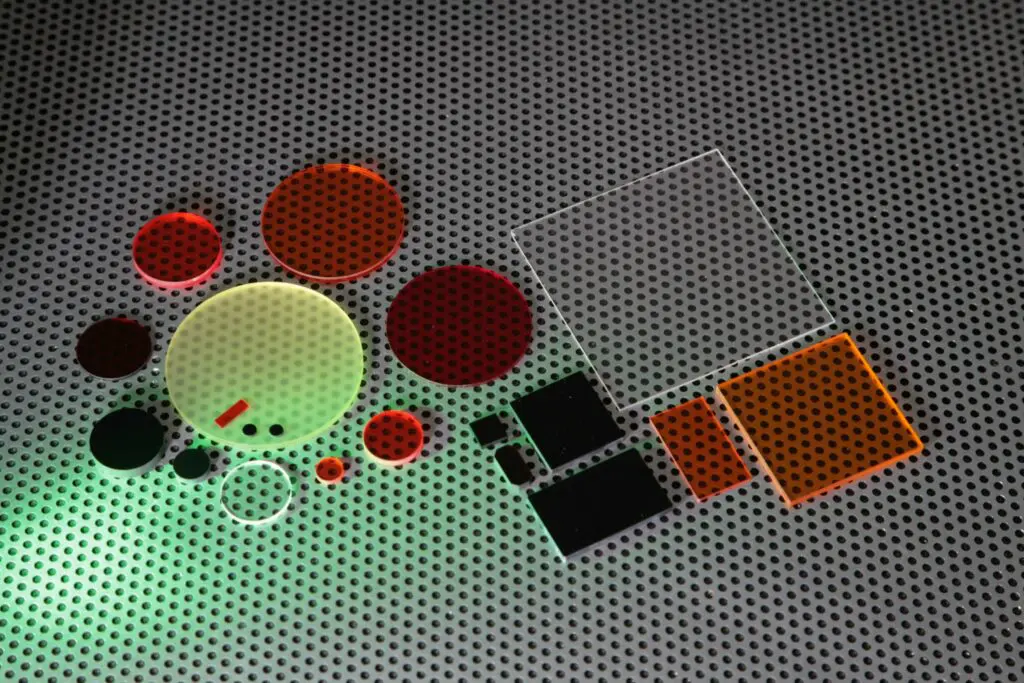In the fast-evolving landscape of the medical industry, innovative technologies continue to reshape the way we diagnose, treat, and understand health conditions. Amid these advancements, the unassuming yet indispensable optical filters play a pivotal role, enabling precise and accurate imaging across a spectrum of medical applications. We analyse the profound contributions optical filters make, shaping diagnostics, imaging, and scientific breakthroughs in the world of medicine.
Key Takeaways:
- Optical filters play a pivotal role in the dynamic landscape of the medical industry, enabling accurate imaging and diagnostics through controlled light transmission based on specific wavelengths.
- The analysis of optical filters reveals their profound impact on reshaping medical practices, enhancing visualisations, and driving scientific breakthroughs.
- Different types of optical filters, including bandpass, longpass, shortpass, neutral density, and polarising filters, cater to diverse medical imaging techniques, enhancing image contrast and accuracy.
- In medical applications, optical filters contribute to fields like radiology, fluorescence microscopy, dermatology, and surgery, enhancing image quality and guiding surgical procedures.
- Critical properties of optical filters, such as high optical transmission, sharp cutoffs, durability under sterilisation, compatibility, and low autofluorescence, define their effectiveness in improving healthcare outcomes.
Understanding Optical Filters
Optical filters are not mere accessories but essential components that regulate light to enhance the accuracy of medical imaging and diagnostic procedures. These filters are meticulously designed devices that control the transmission of light based on specific wavelength criteria. By allowing certain wavelengths to pass through while blocking others, optical filters play a pivotal role in refining the quality of images captured by medical devices.
Within the medical field, several types of optical filters find application, each tailored to address the unique demands of various medical imaging techniques.
Bandpass Filters
Bandpass filters are a staple in medical imaging due to their ability to transmit a specific range of wavelengths while blocking others. These filters are instrumental in enhancing image contrast and clarity in techniques such as fluorescence microscopy and Raman spectroscopy. In the context of medical diagnostics, bandpass filters help differentiate between different tissues or structures by isolating the relevant spectral information.

Longpass and Shortpass Filters

Longpass filters permit longer wavelengths to pass through while blocking shorter ones, and shortpass filters do the opposite. In medical applications, these filters are valuable for separating specific components of light emission or reflection. They find use in fluorescence imaging, where they isolate emitted wavelengths from the excitation light, enabling accurate visualisation of fluorescent markers without interference from background illumination.
Neutral Density Filters
Neutral density filters are employed when excessive light intensity could damage sensitive equipment or cause discomfort to patients. In applications like ophthalmology, where retinal imaging is performed, these filters reduce the intensity of light without altering its colour balance. This ensures patient safety and accurate diagnostic results.

Polarising Filters
Polarising filters are utilised in medical imaging techniques that involve reflective surfaces, such as dermatology and ophthalmology. These filters eliminate glare and unwanted reflections, revealing hidden details and enhancing visibility. By selectively allowing light oscillating in a specific direction to pass through, polarising filters enhance image quality in diverse medical procedures.
In the medical realm, these filters play a crucial role in enhancing imaging accuracy, improving diagnostics, and aiding in various treatments. As a key contributor to the evolution of medical technologies, we take pride in the vital role our optical filters play in ensuring the success of countless medical procedures.
Optical Applications in Medicine
Medical imaging owes much of its success to the integration of optical filters from enhancing visualisation to enabling more precise diagnoses. Our high-quality optical filters find their way into a multitude of medical applications, contributing to advancements across a spectrum of fields.
- Enhancing Radiology: Optical filters are integral to radiology, where X-ray and computed tomography (CT) scans are prevalent. Filters help enhance the clarity of images by selectively removing unwanted radiation, resulting in more detailed and accurate diagnostic insights.
- Fluorescence Microscopy: In fields like pathology and cellular biology, fluorescence microscopy relies heavily on optical filters to isolate specific wavelengths emitted by fluorescent markers. This enables researchers to visualise and study cellular structures with exceptional precision.
- Polarised Light Imaging: In the field of dermatology, polarised light imaging assists in diagnosing skin conditions and monitoring the effectiveness of treatments. Polarising filters play a crucial role by eliminating surface glare and revealing subsurface structures. These filters enhance visibility of skin textures, capillaries, and pigmentation patterns, enabling dermatologists to make more accurate assessments.
- Fluorescence-Guided Surgery: Fluorescence-guided surgery is revolutionising the way surgeries are performed by enhancing visualisation of target tissues. Optical filters are employed to isolate fluorescence emissions from contrast agents, enabling surgeons to accurately identify tumor boundaries, lymph nodes, and other critical structures in real-time. This technology enhances the precision of surgical procedures, reduces the risk of leaving behind residual cancerous tissue, and improves patient outcomes.
- Endoscopy and Laparoscopy: Optical filters find their way into endoscopes and laparoscopes, enabling surgeons to visualise internal organs and tissues during minimally invasive procedures. By filtering out excess light, these filters enhance the clarity of the surgical field, facilitating safer and more accurate operations.
- Spectral Imaging in Surgery: Optical filters are employed in spectral imaging techniques, which allow surgeons to differentiate between healthy and diseased tissues during surgeries. This innovation contributes significantly to the success rates of procedures ranging from tumor removals to organ transplants.
Critical Properties of Optical Filters
Optical Filters hold the power to shape the clarity, precision, and reliability of diagnostic insights. These properties not only define the performance of filters in medical applications, but also determine the extent to which they contribute to accurate diagnoses and successful procedures.
- High Optical Transmission: Optical filters used in medicine must possess high transmission efficiency to ensure that the maximum amount of relevant light reaches the sensor or detector. This property minimises signal loss and guarantees accurate representation of the imaged structures.
- Sharp Cutoffs and Narrow Bandwidths: Precise diagnostic imaging requires filters with well-defined transitions between transmitted and blocked wavelengths. Filters with narrow bandwidths enhance the ability to isolate specific signals and distinguish subtle differences in tissue properties.
- Stability under Sterilisation: Medical equipment and instruments undergo rigorous sterilisation processes to ensure patient safety. Optical filters must maintain their optical properties after exposure to sterilisation methods like autoclaving or chemical treatments.
- Durability and Compatibility: Filters used in medical settings need to be resilient and compatible with various environments, including extreme temperatures, humidity, and exposure to chemicals. The durability of these filters directly contributes to the longevity of medical devices.
- Low Autofluorescence: In applications like fluorescence microscopy, where sensitivity to emitted light is crucial, filters must exhibit minimal autofluorescence. This property ensures that the filter itself does not contribute to unwanted background noise in the images.
Continual Innovation for Improved Healthcare
As the medical industry evolves, so do the demands placed on optical filters. We remain committed to pushing the boundaries of optical technology to meet the evolving needs of medical professionals. Through ongoing research and collaboration, we strive to create filters that empower medical practitioners with unmatched precision and clarity.
As a trusted global optical supplier of optical components, we take pride in our role in advancing medical technologies. From enhancing diagnostic imaging to enabling precise surgical procedures, our optical filters continue to drive improvements in healthcare outcomes.
View our full range of Stock Optical Filters, or for custom components specific to your design requirements, contact our team for more information.







